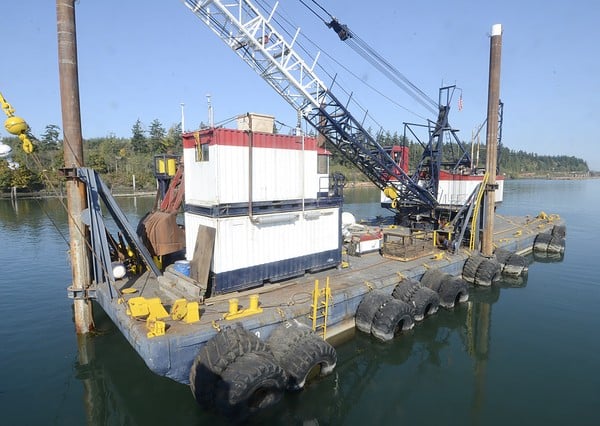On the 100th anniversary of the sinking of the RMS Titanic, two back stories published earlier this month in the Cape Breton Post, Nova Scotia
HALIFAX, April 2 — History shows that Atlantic Canadians have so often risen to the occasion at times of tragedy that their willingness to help others has become a threadbare cliché. But like all clichés, this one contains a hard kernel of truth based on centuries of having to deal with countless shipwrecks, major fires, coal mining accidents and all manner of natural disasters.
When the Titanic sank on April 15, 1912 — killing 1,500 of the 2,200 aboard — the people of Halifax were already well versed in dealing with disaster. As a result, they worked tirelessly to recover the dead and comfort surviving relatives.
“The citizens of Halifax were so moved by it, and they came out in large numbers,” says Paul Butler of St. John’s, N.L., author of “Titanic’s Ashes,” a recently published fictional account of the aftermath of the ship’s demise. “Being at the mercy of the ocean ... is central to people who have a maritime connection.”
A total of 150 Titanic victims are buried in three Halifax graveyards, their bodies prepared by 40 embalmers from Nova Scotia, New Brunswick and Prince Edward Island.
Among the graves is the final resting place of the fourth victim pulled from the icy North Atlantic days after the luxury liner plunged to the ocean floor. Sidney Leslie Goodwin was only 19 months old when he died.
The English boy wasn’t the youngest Titanic passenger to perish, but his story serves as a poignant reminder that in the weeks after the sinking, crews aboard four ships — most of them from Halifax — volunteered to perform the grim task of recovering bodies left bobbing on the cold ocean.
Published accounts from the time say the job was physically and emotionally draining, particularly for those who found Goodwin, a fair-haired child whose entire family perished in the sinking.
It’s hard to imagine that anything good could come from taking part in such a gruesome task, but Bob Conrad thinks otherwise.
In September 1998, Conrad was among a group of Nova Scotia fishermen who joined the search for survivors after a Swissair passenger jet caught fire and crashed into St. Margarets Bay, west of Halifax.
At one point, he thought he spotted a child’s doll. But as he drew closer, he realized the small figure was that of a toddler’s naked body.
Conrad recalls how he gently lifted the boy from the water and wrapped him in a blanket.
The fisherman would later learn the boy’s name was Robert Martin Maillet. He was only 14 months old when he died along with his parents, Karen Domingue Maillet and Denis Maillet, both 37, of Baton Rouge, La. He was the youngest person on the plane.
Today, Conrad speaks in calm, even tones when describing what happened that moonless night and the impact the events had on him.
“There’s a tendency to think that it would be awful — and it is,” says Conrad, now 65.
“But, from my experience, when the need to help another is critical, the element of danger and personal threat seems to be gone; it’s not there. What would be horrid for your eyes to see, somehow is muted or blunted so that you can perform the task at hand. That was most amazing to me.”
Blair Beed, a Halifax author and well-known Titanic sites tour guide, says Atlantic Canadians are not unique in their ability to reach out to others.
“When we had the Halifax Explosion in 1917, the people of Boston came rallying to us because of that friendship across the border,” says Beed, author of “Titanic Victims in Halifax Graveyards.”
“But we certainly have a long history of helping others,” he says, noting that Halifax — founded in 1749 as a military base — has always been imbued by a sense of duty and loyalty.
For Conrad, who still lives in Fox Point, N.S., where he fishes for bluefin tuna and mackerel, the motivation to help others comes from a profound place.
“For me, there is this reality for every human being: each of us wants our life to count for something. ... It’s just that when you get in a disaster scenario, the opportunity to achieve that is thrust upon you,” he says.
“There’s something so meaningful in not living for yourself but living for others and in community.”
- 30 -
HALIFAX, April 4 - - Church bells tolled as cable ships steamed into Halifax harbour laden with grim cargo: the bodies of Titanic passengers whose voyages across the North Atlantic had ended in unthinkable tragedy.
As the simple wooden boxes began piling up along the waterfront, the disaster shifted to the seaside city and local officials found themselves trying to quell the public’s morbid curiosity.
“One of the things that was preached by the city fathers, requested by the White Star Line and even talked about in sermons in churches was, ’Please do not make this into a three-ring circus, you don’t need to go see the bodies coming off the ship,’ ” says Garry Shutlak, a senior archivist at the Nova Scotia Archives.
It was the days immediately following the sinking of the magnificent ship on April 15, 1912. The largest liner of its time had struck an iceberg on a calm, moonless night and slid to a watery grave south of the Grand Banks.
Cable ships were dispatched from Halifax in the aftermath to pluck bodies from the frigid waters when it became clear only those who made it into the lifeboats had survived.
The crew of the Minia and Mackay-Bennett knew how to navigate the unforgiving North Atlantic. The ships, too, were dolefully well-suited for the task: their storage holds were large enough to accommodate the dead.
Halifax was considered an ideal centre to receive the victims because of its connections to other cities by rail and sea, which facilitated the return of bodies to families who could afford it.
Alan Ruffman, a local Titanic researcher, says Halifax was also a wireless communications hub, meaning word of Titanic’s sinking reached the city within hours.
“We knew there had been a major disaster offshore,” says Ruffman, author of “Titanic Remembered: The Unsinkable Ship and Halifax.”
“The White Star Line knew it had a public relations problem on its hands because the same day of the sinking, the 15th of April, ships in the area reported seeing bodies floating in their life-jackets.”
By the time the cable ships returned to Halifax, the city was in mourning. Flags were flying at half-mast. Some windows were draped in black crepe.
Headlines in the local newspapers proclaimed Hilda Slayter of Halifax had survived the ordeal. Others asked what had become of George Wright, a well-heeled philanthropist who had booked a first-class ticket on Titanic, but whose body was never found.
The bodies of other victims were taken to Snow’s funeral home and the Mayflower Curling Club, which served a makeshift mortuary. Police officers and military personnel stood by to keep the prying eyes of the public at bay.
Over the coming weeks, families of descended on Halifax in hopes of finding their loved ones among the dead and claiming personal effects.
There was no single memorial to remember the victims, though Ruffman says there were a number of funeral services for individuals, including an unidentified toddler who was plucked from the icy waters by the crew of the Mackay-Bennett.
The youngster was buried at Fairview Lawn Cemetery under a headstone paid for by the ship’s crew and dedicated to an “unknown child.” He was later identified as 19-month-old Sidney Leslie Goodwin through painstaking genetic testing.
A century later, other memories of Titanic linger in parts of the city, though they are harder to find.
Millionaire George Wright’s home still makes an impressive statement in the city’s south end, while a downtown building continues to bear his family name.
The Mayflower Curling Club was destroyed in the Halifax explosion in 1917, but exists today in another location under the same name. Snow’s funeral home was located inside what is now the Five Fishermen Restaurant and Grill.
And St. George’s Round Church, where mourners gathered to pay tribute to the unknown child, still holds services on Brunswick Street.
“In many respects, it is our story,” says Ruffman. “While they built it in Belfast, sank it in the Atlantic, we buried it here in Halifax."
- 30 -
















